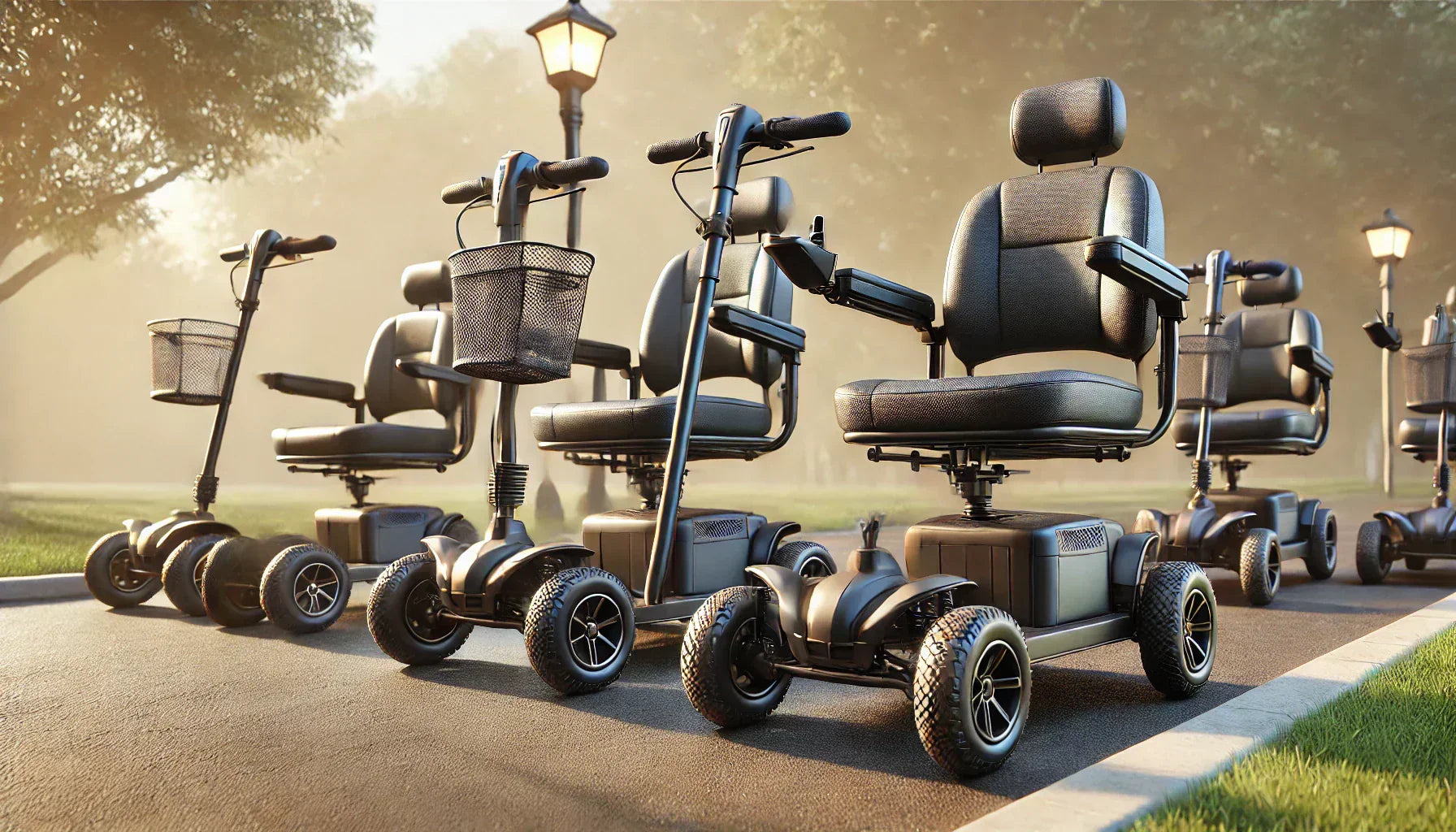
Best Heavy-Duty Mobility Scooters for Adults: High-Capacity Models for Stability
📋 KEY TAKEAWAYS
- Heavy-duty mobility scooters typically support 350-500+ pounds with reinforced frames and wider bases
- Premium models offer enhanced suspension, larger batteries (20+ mile range), and all-terrain capabilities
- Bariatric scooters provide extra seat width, improved stability, and powerful motors for reliable performance. Check out our Bariatric Hospital beds
Best for Most Users: Shoprider Enduro XL3 Heavy Duty Mobility Scooter
Budget Option: Vocic D61 Mid-Size 4-Wheel Electric Mobility Scooter
For Maximum Capacity: Shoprider Flagship Cabin Mobility Scooter
Finding Reliable Heavy-Duty Mobility Support
The best heavy-duty mobility scooters offer robust support, enhanced stability, and superior comfort for users requiring higher weight capacities and reliable performance. These specialized mobility solutions are engineered with reinforced frames, wider bases, and powerful motors that can handle the demands of daily use for larger individuals or those needing extra stability. Quality options from leading brands like Shoprider and Vocic provide comprehensive mobility solutions that don't compromise on safety or comfort.
The Shoprider Enduro XL3 Heavy Duty Mobility Scooter stands out as our top recommendation for most users seeking a heavy-duty option, with its impressive combination of durability, comfort, and performance capabilities. Throughout this guide, we'll explore the essential features, top models, and important considerations for selecting a mobility scooter that can reliably support higher weight capacities while delivering exceptional stability and comfort for daily use.
When selecting a heavy-duty mobility scooter, you're investing in more than just transportation – you're choosing independence, comfort, and safety. These specialized models are built with reinforced components, wider wheelbases, and enhanced stability features to accommodate higher weight capacities and provide reliable performance across various terrains. For users requiring additional support, 4-wheel mobility scooters offer superior stability over their 3-wheel counterparts, making them ideal for outdoor use and uneven surfaces.
Understanding Heavy-Duty Mobility Scooter Classifications
Heavy-duty mobility scooters are designed specifically to accommodate users with higher weight requirements or those needing enhanced stability features. These specialized mobility aids are categorized based on their weight capacity, construction, and performance capabilities, helping users select the most appropriate option for their specific needs.
Weight Capacity Categories
The foundation of any heavy-duty mobility scooter classification is its weight capacity, which typically falls into one of three categories:
-
Standard-Heavy (300-350 lbs): Bridging the gap between standard and true heavy-duty models, these scooters offer reinforced components while maintaining reasonable maneuverability. They're ideal for users who need slightly more support than standard models provide but don't require full bariatric capabilities.
-
Heavy-Duty (350-450 lbs): These purpose-built models feature strengthened frames, wider bases, and more powerful motors. They deliver excellent stability and performance while accommodating users with higher weight requirements. Most leading manufacturers offer several options in this category.
-
Bariatric/Ultra Heavy-Duty (450-500+ lbs): Designed specifically for bariatric users, these specialized mobility scooters incorporate maximum reinforcement, extra-wide seating, and high-performance components. They prioritize stability and durability above all else, ensuring safe and comfortable transportation for users with the highest weight requirements.
Understanding these categories helps narrow your search to models specifically engineered for your weight requirements. Using a scooter with appropriate capacity ensures optimal performance, longer equipment life, and most importantly, user safety.
Construction & Design Differences
Heavy-duty mobility scooters differ significantly from standard models in their fundamental construction and design elements:
-
Frame Reinforcement: Heavy-duty models utilize thicker metal, additional support structures, and reinforced welding points to create a more robust foundation.
-
Wider Wheelbase: The distance between wheels is increased to provide enhanced stability, particularly when navigating turns or uneven terrain.
-
Larger Tires: Heavier-duty models typically feature wider, more substantive tires with deeper treads to improve traction and weight distribution.
-
Enhanced Suspension: To maintain comfort despite the added strength, quality heavy-duty scooters incorporate sophisticated suspension systems that absorb shock while supporting higher weights.
-
Motor Power: Motors in heavy-duty models deliver increased torque and power, allowing them to maintain performance even under maximum capacity.
-
Battery Systems: Enhanced battery configurations provide the additional power needed for heavier loads without sacrificing range or performance.
These construction differences ensure that heavy-duty scooters can reliably support their stated weight capacities while maintaining stability, comfort, and performance. For users with specific medical needs who also require specialized support surfaces, bariatric hospital beds can complement these mobility solutions for comprehensive care.
Key Features to Look For in Heavy-Duty Mobility Scooters
When shopping for a heavy-duty mobility scooter, specific features differentiate quality models from inferior options. Understanding these critical elements helps ensure you select a scooter that meets your needs for stability, comfort, and reliable performance.
Enhanced Weight Capacity & Structural Integrity
The foundation of any heavy-duty mobility scooter is its capacity to safely support higher weights while maintaining structural integrity:
-
Reinforced Frame Construction: Look for models with steel reinforcement or aluminum alloy frames specifically engineered to distribute weight evenly across the entire structure.
-
Weight Capacity Margin: Choose a scooter with a maximum capacity that exceeds your requirements by at least 50-75 pounds to ensure optimal performance and equipment longevity.
-
Weight Distribution Design: Quality heavy-duty scooters feature balanced design elements that properly distribute user weight between front and rear wheels for maximum stability.
-
Structural Warranty Coverage: Manufacturer warranties that specifically cover the frame and structural components indicate confidence in the scooter's durability under heavy-duty use.
Proper structural support is non-negotiable in heavy-duty models, as it affects not only performance but also user safety. The best manufacturers conduct extensive testing to ensure their frames maintain integrity even under maximum capacity conditions.
Comfort Features for Extended Use
Heavy-duty users often require enhanced comfort features for longer durations of use:
-
Bariatric Seating: Look for wider seats (22"+ width) with high-density foam that provides proper support without compression over time.
-
Adjustable Armrests: Width-adjustable and height-adjustable armrests accommodate different body types and provide proper ergonomic positioning.
-
Lumbar Support: Quality models incorporate contoured backrests with adequate lumbar support to promote proper posture during extended use.
-
Suspension Systems: Advanced suspension components that include both front and rear shock absorption minimize impact from terrain irregularities.
-
Adjustable Tiller: The ability to adjust the tiller position allows customization to the user's arm length and preferred driving position.
-
Seat Rotation: Seats that rotate (typically 180° on heavy-duty models) facilitate easier mounting and dismounting without twisting.
These comfort features are particularly important for users who spend significant time on their scooters, as they help prevent discomfort and potential pressure issues during extended use. Quality mobility equipment works in tandem with appropriate hospital bed mattresses to provide comprehensive comfort throughout the day.
Battery Life & Motor Performance
The power system in heavy-duty mobility scooters must deliver reliable performance under higher demands:
-
Battery Capacity: Look for models with 50+ Ah batteries that can provide 15-20+ miles of range under full capacity conditions.
-
Dual Battery Options: Some premium models offer dual battery configurations that extend range and provide redundancy.
-
Motor Power: Motors rated at 700+ watts deliver the necessary torque for inclines and varied terrain while carrying maximum capacity.
-
Climbing Ability: Quality heavy-duty scooters maintain climbing capabilities of at least 8-10 degrees even when operating at maximum capacity.
-
Speed Maintenance: The best models maintain consistent speed performance regardless of user weight, with typical top speeds between 4-8 mph.
These power system components ensure that heavy-duty scooters maintain performance even under demanding conditions, providing users with confidence in their mobility solution's reliability.
Top Heavy-Duty Mobility Scooters Compared
The market offers several excellent heavy-duty mobility scooters, each with unique advantages. This detailed comparison helps identify which models excel in specific areas to match your particular needs.
Shoprider Enduro XL3: Best Overall Heavy-Duty Option
The Shoprider Enduro XL3 stands as our top recommendation for most users seeking a heavy-duty mobility scooter, delivering an exceptional blend of durability, comfort, and performance features at a competitive price point.
Key Specifications:
- Weight capacity: 400 lbs
- Top speed: 5 mph
- Range per charge: 25 miles
- Turning radius: 39 inches
- Ground clearance: 3 inches
- Overall width: 27 inches
Standout Features:
- Reinforced steel frame with advanced welding techniques for maximum durability
- Full suspension system with both front and rear shock absorption
- Deluxe captain's seat with enhanced width (22") and high-density foam padding
- Larger 10" pneumatic tires provide excellent stability and terrain management
- 700-watt motor delivers consistent performance even at maximum capacity
- Easy-to-use delta tiller controls with ergonomic design for comfortable operation
The Enduro XL3 excels particularly in outdoor environments where its substantial battery range and all-terrain capabilities allow users to navigate varied surfaces confidently. Its balance of maneuverability and stability makes it suitable for both indoor and outdoor use, though its larger footprint means it's best for homes with wider doorways and open floor plans.
Shoprider Flagship: Premium Enclosed Option for Maximum Protection
For users seeking the ultimate in heavy-duty protection and comfort, the Shoprider Flagship offers a fully enclosed cabin experience with weather protection and luxury features.
Key Specifications:
- Weight capacity: 500 lbs
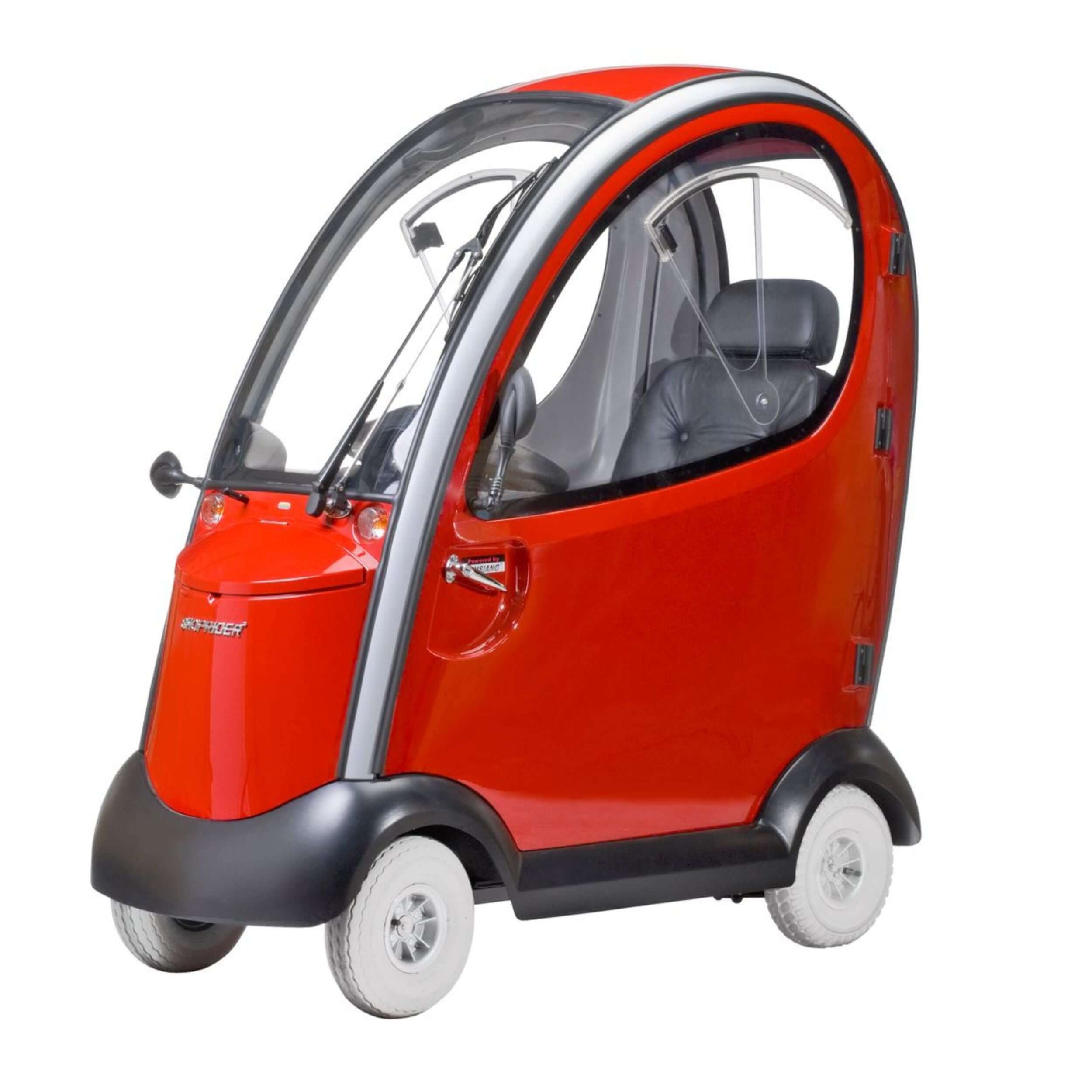
- Top speed: 8 mph
- Range per charge: 35+ miles
- Turning radius: 65 inches
- Ground clearance: 5 inches
- Overall width: 35 inches
Standout Features:
- Fully enclosed cabin with sliding doors and automotive-grade windshield
- Climate management with windshield wipers and defogger system
- Deluxe oversized seating with additional cushioning and adjustable positioning
- Advanced full suspension system for premium ride quality
- Automotive-style dashboard with digital display and enhanced controls
- High-intensity LED lighting system with turn signals and hazard capabilities
- Dual motor system (1400+ watts combined) for maximum power and performance
The Flagship represents the premium tier of heavy-duty mobility scooters, designed for users who need maximum capacity, all-weather protection, and luxury features. Its automotive-inspired design provides an experience closer to driving a small vehicle than operating a traditional mobility scooter, making it ideal for users who need to travel longer distances regularly regardless of weather conditions.
Vocic D61: Budget-Friendly Heavy-Duty Option
The Vocic D61 Mid-Size 4-Wheel Electric Mobility Scooter offers impressive heavy-duty capabilities at a more accessible price point, making it our recommendation for budget-conscious shoppers.
Key Specifications:
- Weight capacity: 350 lbs
- Top speed: 5 mph
- Range per charge: 15 miles
- Turning radius: 43 inches
- Ground clearance: 2.5 inches
- Overall width: 24 inches
Standout Features:
- Reinforced frame construction supports higher weight capacity
- Non-marking tires suitable for both indoor and outdoor use
- Adjustable padded seat with flip-up armrests for easier transfers
- Simple control system with intuitive operation
- Disassembly capability for transport (though heavy when disassembled)
- Energy-efficient LED lighting system for visibility and safety
While offering fewer premium features than higher-priced models, the Vocic D61 delivers reliable heavy-duty performance for users who need enhanced capacity without extensive bells and whistles. It's particularly well-suited for primarily indoor use with occasional outdoor excursions on relatively smooth surfaces.
| Model | Weight Capacity | Top Speed | Range | Best For |
|---|---|---|---|---|
| Shoprider Enduro XL3 | 400 lbs | 5 mph | 25 miles | All-around use, outdoor capability |
| Shoprider Flagship | 500 lbs | 8 mph | 35+ miles | Maximum capacity, all-weather use |
| Vocic D61 | 350 lbs | 5 mph | 15 miles | Budget-conscious users, moderate use |
| Shoprider Enduro XL4 | 450 lbs | 5 mph | 25 miles | Enhanced capacity, rough terrain |
Mobility & Accessibility Considerations for Heavy-Duty Users
Heavy-duty mobility scooter users often have specific accessibility requirements that extend beyond the scooter itself. Understanding these considerations helps ensure your mobility solution integrates seamlessly into your lifestyle and environment.
Home Accessibility Adaptations
Creating a functional environment for heavy-duty mobility scooter use may require specific home modifications:
-
Doorway Width: Standard doorways (30-32") may be insufficient for heavy-duty scooters, which can measure 25-28" in width. Consider expandable hinges or doorway widening for models over 24" wide.
-
Thresholds & Transitions: Eliminate or reduce thresholds between rooms, as even small height differences can challenge heavy-duty scooters with lower ground clearance.
-
Turning Space: Create adequate turning areas (minimum 5' x 5' for most heavy-duty models) in key locations like bedrooms, bathrooms, and kitchens.
-
Flooring Considerations: Ensure floors can support the combined weight of the user and scooter without damage. Remove thick carpeting that can increase motor strain and reduce battery efficiency.
-
Charging Location: Establish a dedicated charging area with appropriate electrical capacity and accessibility that doesn't create tripping hazards.
-
Ramp Requirements: For any steps or level changes, install ramps with appropriate weight ratings (typically 600+ lbs for heavy-duty applications) and gentle slopes (ideally 1:12 ratio or less).
These modifications not only improve scooter accessibility but also enhance overall safety for users with mobility challenges. For those who also use hospital beds at home, ensuring proper clearance for both the bed and scooter is essential for creating a functional living environment.
Transportation & Travel Logistics
Heavy-duty mobility scooters present unique transportation challenges that require careful planning:
-
Vehicle Compatibility: Few heavy-duty scooters disassemble completely, often necessitating vehicle-mounted lifts rated for 250+ pounds to transport them.
-
Lift Types: Platform lifts, interior crane lifts, or ramp systems must specifically indicate compatibility with heavy-duty scooters and their weight.
-
Public Transportation: Verify weight limits on public transit lifts and ramps, as some may not accommodate the highest capacity mobility scooters.
-
Travel Planning: When traveling, research destination accessibility thoroughly, including hotel room dimensions, elevator sizes, and local terrain challenges.
-
Battery Considerations: For air travel, understand airline-specific requirements regarding battery type and disconnection procedures, which are more complex for heavy-duty models with larger battery systems.
Proper transportation planning ensures your heavy-duty scooter remains useful beyond your immediate environment, maximizing the independence and mobility benefits it provides.
Specialized Features for Different User Needs
Heavy-duty mobility scooter users have diverse requirements based on their specific circumstances, health conditions, and lifestyle preferences. Manufacturers have responded with specialized features designed to address these varied needs.
All-Terrain Capabilities for Outdoor Enthusiasts
For users who need heavy-duty support while maintaining an active outdoor lifestyle, all-terrain features provide essential capabilities:
-
Enhanced Suspension Systems: Look for models with adjustable, full suspension systems that can adapt to different terrain types while maintaining comfort.
-
Larger Wheels & Tires: Off-road capable models feature 10-14" pneumatic tires with deeper treads for improved traction on grass, gravel, and uneven paths.
-
Increased Ground Clearance: Quality all-terrain models offer 3-5" of ground clearance to navigate obstacles, small curbs, and uneven surfaces.
-
Higher Torque Motors: Motors with enhanced torque output (typically 800+ watts) provide the power needed to climb inclines and traverse challenging terrain even with maximum weight capacity.
-
Reinforced Undercarriage: Additional protection for critical components shields against damage from rocks, branches, and other outdoor hazards.
-
Extended Range Batteries: For outdoor adventures, look for models offering 25+ miles per charge to ensure adequate range for exploring nature paths and parks.
Models like the Shoprider Enduro XL4 excel in this category, providing the necessary durability and performance for outdoor use while maintaining the weight capacity needed for heavy-duty applications. For users comparing different mobility options for outdoor use, understanding the differences between mobility scooters and power wheelchairs can help determine the most appropriate solution.
Enhanced Comfort Systems for Long-Duration Users
Some users rely on their heavy-duty scooters for extended periods throughout the day, requiring additional comfort features to prevent fatigue and discomfort:
-
Stadium-Style Seating: Premium orthopedic seats with contoured support and additional padding provide proper alignment and pressure distribution.
-
Multiple Adjustment Points: Seats with height, depth, recline, and lumbar adjustments allow customization to individual body types and preferences.
-
Ergonomic Controls: Force-sensing joysticks or ergonomic throttle controls reduce hand and wrist strain during extended operation.
-
Vibration Dampening: Advanced isolation systems minimize vibration transfer from wheels and motors to the seating area, reducing fatigue during longer rides.
-
Comfort Suspension: Independent suspension systems that can be adjusted for user weight optimize ride quality.
-
Climate-Adapted Features: Accessories like canopies for sun protection or hand warmers for cold weather extend comfortable usage seasons.
These enhanced comfort systems are particularly valuable for users who spend most of their day on their scooter, helping prevent secondary complications from prolonged sitting while maximizing independence.
Maintenance & Care for Heavy-Duty Mobility Scooters
The investment in a heavy-duty mobility scooter requires proper maintenance to ensure longevity, reliability, and optimal performance. Understanding the specific care requirements for these specialized models helps protect your investment and maximize safety.
Routine Maintenance Schedule
Implementing a consistent maintenance schedule significantly extends the life of heavy-duty mobility scooters:
-
Daily Checks:
- Battery charge level verification
- Tire pressure inspection (for pneumatic tires)
- Control system functionality test
- Brake response confirmation
- Visual inspection for loose parts or damage
-
Weekly Maintenance:
- Clean exterior surfaces, paying special attention to undercarriage
- Check and tighten any loose fasteners
- Inspect seat upholstery for wear or damage
- Test lighting systems and signals
- Examine tires for wear patterns that might indicate alignment issues
-
Monthly Procedures:
- Clean battery terminals and check for corrosion
- Lubricate moving parts according to manufacturer specifications
- Check motor brushes for wear (if applicable)
- Inspect electrical connections for security and integrity
- Test suspension components for proper function
-
Quarterly Service:
- Full electrical system diagnostic check
- Wheel alignment verification
- Comprehensive frame inspection focusing on stress points
- Battery load testing
- Control system calibration
-
Annual Professional Service:
- Complete disassembly and inspection by qualified technician
- Motor service and carbon brush replacement if needed
- Transaxle lubrication and inspection
- Electronic controller diagnostic assessment
- Battery replacement evaluation
Following this maintenance schedule helps identify potential issues before they develop into costly problems or safety hazards. Document all maintenance performed, creating a service history that can be valuable for troubleshooting and warranty claims.
Battery Care & Optimization
The battery system represents one of the most critical and expensive components in heavy-duty mobility scooters, requiring specific attention:
-
Charging Protocol: Follow the manufacturer's exact charging recommendations regarding frequency and duration. Most heavy-duty models use deep-cycle batteries that benefit from consistent charging routines.
-
Temperature Considerations: Battery performance decreases significantly in extreme temperatures. When possible, store and charge your scooter in climate-controlled environments (60-80°F is optimal).
-
Sulfation Prevention: Regular, complete charging cycles help prevent sulfation—a common cause of battery deterioration. Avoid storing with partially discharged batteries.
-
Connection Maintenance: Keep battery terminals clean and corrosion-free by applying a thin layer of petroleum jelly or terminal protectant spray after cleaning.
-
Weight Impact Awareness: Operating consistently at maximum weight capacity increases battery drain. Heavy-duty users may benefit from higher-capacity battery upgrades where available.
-
Replacement Timing: Most quality batteries in heavy-duty applications last 18-24 months with proper care. Budget for replacement as a regular maintenance expense rather than waiting for complete failure.
Proper battery maintenance not only extends battery life but also ensures consistent performance and range, particularly important for heavy-duty users who may rely more heavily on their mobility equipment.
For users comparing these options, exploring detailed information about the differences between mobility scooters and electric wheelchairs provides valuable guidance for making the most appropriate choice.
Bariatric Scooters vs. Standard Heavy-Duty Models
Within the heavy-duty category, bariatric models offer specialized features beyond just increased weight capacity:
Structural Differences:
- Bariatric scooters incorporate additional reinforcement at critical stress points
- Frame designs specifically engineer weight distribution for users with different body compositions
- Materials and construction techniques prioritize maximum durability
Seating Variations:
- Standard heavy-duty seats typically measure 20-22" wide
- Bariatric models offer 24-30" seat widths with appropriate depth adjustments
- Armrest positioning accommodates larger body frames with greater adjustment ranges
Performance Adaptations:
- Motor systems in bariatric models deliver higher torque at lower speeds for smooth starts
- Battery systems optimize for the increased power demands of higher weight capacities
- Gearing ratios adjust to maintain efficiency under maximum load conditions
These specialized design elements make bariatric scooters more appropriate than standard heavy-duty models for users at the upper end of the weight spectrum or with specific body composition needs.
Investment Considerations & Financial Planning
A heavy-duty mobility scooter represents a significant investment, with pricing typically ranging from $1,500 to $7,500+ depending on features and capabilities. Understanding the financial aspects helps users make sustainable purchasing decisions that align with both their mobility needs and financial situation.
Insurance Coverage & Reimbursement
Navigating insurance coverage for heavy-duty mobility scooters requires understanding specific criteria and documentation requirements:
-
Medicare Coverage: Medicare Part B may cover 80% of the approved amount for mobility scooters when:
- Prescribed as medically necessary by a physician
- The user has a mobility-limiting condition that impacts activities of daily living
- The user cannot operate a manual wheelchair but can safely operate a scooter
- The user's home environment can accommodate the equipment
-
Documentation Requirements:
- Face-to-face examination with physician documenting mobility limitations
- Detailed written prescription including diagnosis and prognosis
- Medical necessity letter explaining why standard-weight capacity models are insufficient
- In-home assessment verifying the equipment can be used effectively in the user's residence
-
Coverage Limitations:
- Medicare typically approves standard-weight capacity models unless medical necessity for heavy-duty features is clearly established
- Upgraded features may not be covered without specific justification
- Some heavy-duty models exceed Medicare's price ceiling, resulting in higher out-of-pocket costs
For bariatric users, demonstrating medical necessity for heavy-duty equipment is often more straightforward, though specific documentation of weight, body composition, and other relevant factors remains essential.
Financing Options & Cost Management
Various financing strategies can help manage the substantial investment in a heavy-duty mobility scooter:
-
Manufacturer Financing: Many mobility equipment manufacturers offer in-house financing with terms specifically designed for medical equipment purchases
-
Healthcare Credit Cards: Specialized credit options like CareCredit offer promotional periods with deferred interest specifically for medical purchases
-
Non-Profit Organizations: Condition-specific foundations sometimes provide grants or financial assistance for mobility equipment
-
Tax Considerations: Mobility scooters prescribed for medical necessity may qualify as tax-deductible medical expenses
-
Equipment Rental Programs: Some providers offer rent-to-own options that apply rental payments toward eventual purchase
-
Certified Pre-Owned Options: Refurbished heavy-duty scooters with new batteries and warranty coverage typically cost 30-40% less than new models
When evaluating total cost of ownership, consider ongoing expenses including battery replacement (typically every 18-24 months), routine maintenance, and potential repair costs. These additional expenses should be factored into the overall financial planning for your mobility solution.
Environmental Assessment & Navigation
Safe operation of heavy-duty mobility scooters requires careful environmental assessment and strategic navigation:
-
Pre-Journey Planning: Evaluate routes for accessibility before travel, considering width clearances, surface conditions, and potential obstacles.
-
Surface Evaluation: Assess surface stability, particularly for outdoor terrain where heavy-duty scooters may sink into soft ground due to their weight.
-
Weather Considerations: Account for how weather affects both scooter performance and surface conditions; wet surfaces dramatically increase stopping distances for heavier scooters.
-
Crowd Navigation: Allow extra space and time when navigating crowded areas, announcing your presence when necessary and planning wider turning arcs.
-
Doorway Techniques: Approach doorways straight-on at reduced speed, and consider doorway width before attempting passage to prevent damage or entrapment.
-
Obstacle Management: Develop strategies for managing common obstacles such as curbs, thresholds, and uneven transitions based on your specific scooter's capabilities.
Users of all-terrain mobility scooters should be particularly attentive to environmental factors, as these models are often used in more challenging outdoor settings where surface conditions can change rapidly.
Advanced Features & Technology in Modern Heavy-Duty Scooters
The latest generation of heavy-duty mobility scooters incorporates sophisticated technology that enhances performance, safety, and user experience. Understanding these advancements helps users select models that provide optimal functionality for their specific needs.
Smart Technology Integration
Modern heavy-duty scooters increasingly feature digital systems that enhance usability and provide valuable information:
-
LCD Control Panels: Interactive displays show battery status, speed settings, odometer readings, and diagnostic information in real-time.
-
Programmable Performance Settings: User-specific profiles allow customization of acceleration, speed limits, and turning sensitivity to match individual preferences and abilities.
-
Diagnostic Capabilities: Onboard diagnostic systems quickly identify potential issues, often with troubleshooting guidance displayed directly on the control panel.
-
Bluetooth Connectivity: Some advanced models offer smartphone connectivity for remote status monitoring, diagnostic data sharing with service providers, and location tracking.
-
Electronic Stability Control: Sophisticated sensors monitor inclination and turning speed, automatically adjusting power delivery to enhance stability during challenging maneuvers.
These technological features not only improve the user experience but also enhance safety by providing better system monitoring and more intuitive controls tailored to individual needs.
Adaptive Driving Controls
For users with specific physical limitations, advanced control adaptations enable safer and more comfortable operation:
-
Single-Hand Controls: Consolidated control systems allow full operation with one hand for users with hemiplegia or similar conditions.
-
Breath-Controlled Options: For users with extremely limited upper extremity function, specialized controls respond to breath pressure for directional control.
-
Expanded Control Dimensions: Oversized control systems accommodate users with limited fine motor control or hand dexterity issues.
-
Head Array Systems: Advanced control options that respond to head movements provide alternatives for users with severely limited upper extremity function.
-
Custom Joystick Configurations: Variable sensitivity settings and physical joystick adaptations accommodate different grip strengths and control capabilities.
These adaptive controls ensure that heavy-duty mobility scooters remain accessible to users with a wide range of physical capabilities beyond weight considerations alone. When comparing mobility options for users with significant upper body limitations, understanding the differences between mobility scooters and power wheelchairs becomes particularly important.
Our Top Recommendation
After comprehensive evaluation of performance capabilities, durability, user comfort, and value, our top recommendation for most users seeking a heavy-duty mobility scooter is the Shoprider Enduro XL3 Heavy Duty Mobility Scooter.
Why the Shoprider Enduro XL3 Stands Above the Competition
The Shoprider Enduro XL3 delivers exceptional value through its combination of robust construction, performance capabilities, and user-focused features:
-
Optimal Weight Capacity: The 400-pound capacity hits the sweet spot for most heavy-duty users without overbuilding to an extent that compromises maneuverability
-
Superior Battery Range: With a 25-mile range per charge, the Enduro XL3 provides significantly more operational freedom than comparably priced competitors
-
Balanced Comfort Features: The deluxe captain's seat with enhanced width (22") and high-density foam padding provides exceptional comfort without unnecessary complexity
-
All-Terrain Capability: Larger 10" pneumatic tires and enhanced ground clearance allow confident navigation of various surfaces from sidewalks to moderately challenging outdoor terrain
-
Reliability Track Record: Consistent positive feedback from long-term users indicates excellent durability and minimal maintenance issues over years of operation
-
Value Proposition: While premium features command a higher price than entry-level models, the performance-to-price ratio represents excellent value compared to competitors with similar specifications
For users requiring maximum weight capacity or specialized features like full weather protection, alternatives like the Shoprider Flagship may prove more appropriate. However, for the majority of heavy-duty scooter users seeking balanced performance, comfort, and durability, the Enduro XL3 represents the optimal combination of features and value.
Frequently Asked Questions
What qualifies as a heavy-duty mobility scooter?
Heavy-duty mobility scooters are specifically designed to support users requiring higher weight capacities, typically 350 pounds and above. Beyond just increased weight capacity, these specialized models feature reinforced frames, wider bases for enhanced stability, more powerful motors to maintain performance under higher loads, and often larger seating dimensions to accommodate different body types comfortably. The construction incorporates stronger materials, additional support structures, and enhanced suspension systems to ensure both safety and comfort for larger individuals.
How do I know if I need a heavy-duty model versus a standard mobility scooter?
You should consider a heavy-duty mobility scooter if you: 1) Exceed or approach the weight capacity of standard models (typically 250-300 pounds), 2) Require wider seating dimensions for comfort, 3) Need enhanced stability due to balance concerns or uneven terrain navigation, 4) Find standard models uncomfortable or insufficiently supportive for extended use, or 5) Experience performance issues with standard models such as reduced speed, shorter battery life, or difficulty with inclines. A healthcare professional can provide guidance based on your specific physical needs and usage patterns.
What is the typical price range for quality heavy-duty mobility scooters?
Quality heavy-duty mobility scooters typically range from $1,500 to $7,500+ depending on features, capacity, and performance capabilities. Entry-level heavy-duty models supporting 350-400 pounds generally fall in the $1,500-$2,500 range. Mid-range options with enhanced comfort features and better performance typically cost $2,500-$4,000. Premium models with maximum capacity (450-500+ pounds), advanced technology, superior range, and all-terrain capabilities can exceed $5,000, with fully-enclosed cabin models like the Shoprider Flagship reaching $7,000-$8,000.
How long do batteries typically last in heavy-duty mobility scooters?
Battery life in heavy-duty mobility scooters depends on several factors, but quality deep-cycle batteries typically last 18-24 months with proper care and maintenance. Daily use patterns significantly impact battery lifespan; users who regularly discharge batteries beyond 50% will experience shorter overall life than those who maintain higher charge levels. Environmental factors also play a role, with extreme temperatures (both hot and cold) reducing both performance and lifespan.
Most manufacturers recommend replacing batteries as a pair even if only one shows degradation to ensure balanced performance and optimal range.
Can heavy-duty scooters be transported in standard vehicles?
Most heavy-duty mobility scooters cannot be transported in standard vehicles without specialized equipment due to their size and weight. Unlike many standard scooters that disassemble into manageable components, heavy-duty models typically remain largely intact, requiring vehicle-mounted lifts or ramps rated for at least 250-400 pounds. Common transportation solutions include:
1) External platform lifts that mount to vehicle hitch receivers,
2) Internal crane lifts for van or SUV installation,
3) Specialized ramp systems with proper weight ratings, or 4) Vehicles specifically modified for wheelchair and scooter transport.
How do weight distribution and center of gravity affect scooter performance?
Weight distribution and center of gravity significantly impact heavy-duty mobility scooter performance and safety. Proper weight distribution ensures stability during turns, stops, and travel over uneven surfaces. The center of gravity should remain as low and centered as possible; top-heavy loading or unbalanced weight distribution increases tip-over risk, particularly on inclines or during turns.
Heavy-duty scooters are designed with wider wheelbases and optimized weight distribution to accommodate higher user weights, but adding storage accessories or carrying items improperly can compromise these design advantages. Always distribute any carried items evenly and keep heavier objects positioned low on the scooter for maximum stability.
What maintenance is most important for ensuring longevity of a heavy-duty scooter?
The most critical maintenance tasks for ensuring heavy-duty scooter longevity include: 1) Proper battery care—following manufacturer charging protocols exactly, avoiding complete discharge, and keeping connections clean,
2) Regular tire maintenance—checking pressure weekly for pneumatic tires and inspecting solid tires for wear patterns,
3) Frame inspection—examining welding points and stress areas for early signs of metal fatigue,
4) Motor and transaxle care—having a professional check carbon brushes and gear systems annually,
5) Electrical system protection—keeping electronics dry and connections tight, and
6) Moving part lubrication—applying manufacturer-recommended lubricants to pivot points, wheel bearings, and seat mechanisms. Establishing a consistent maintenance schedule and documenting all service significantly extends equipment life.
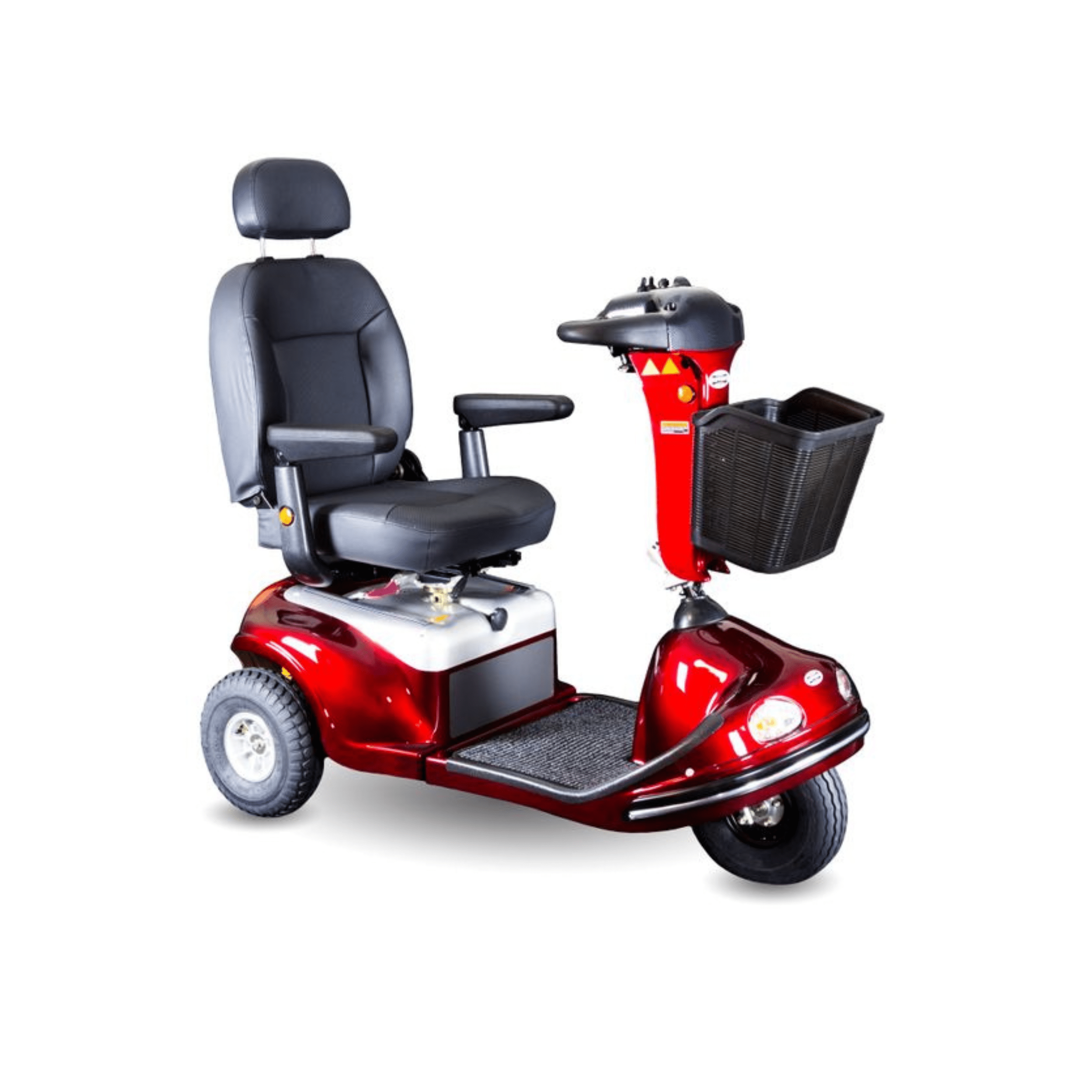
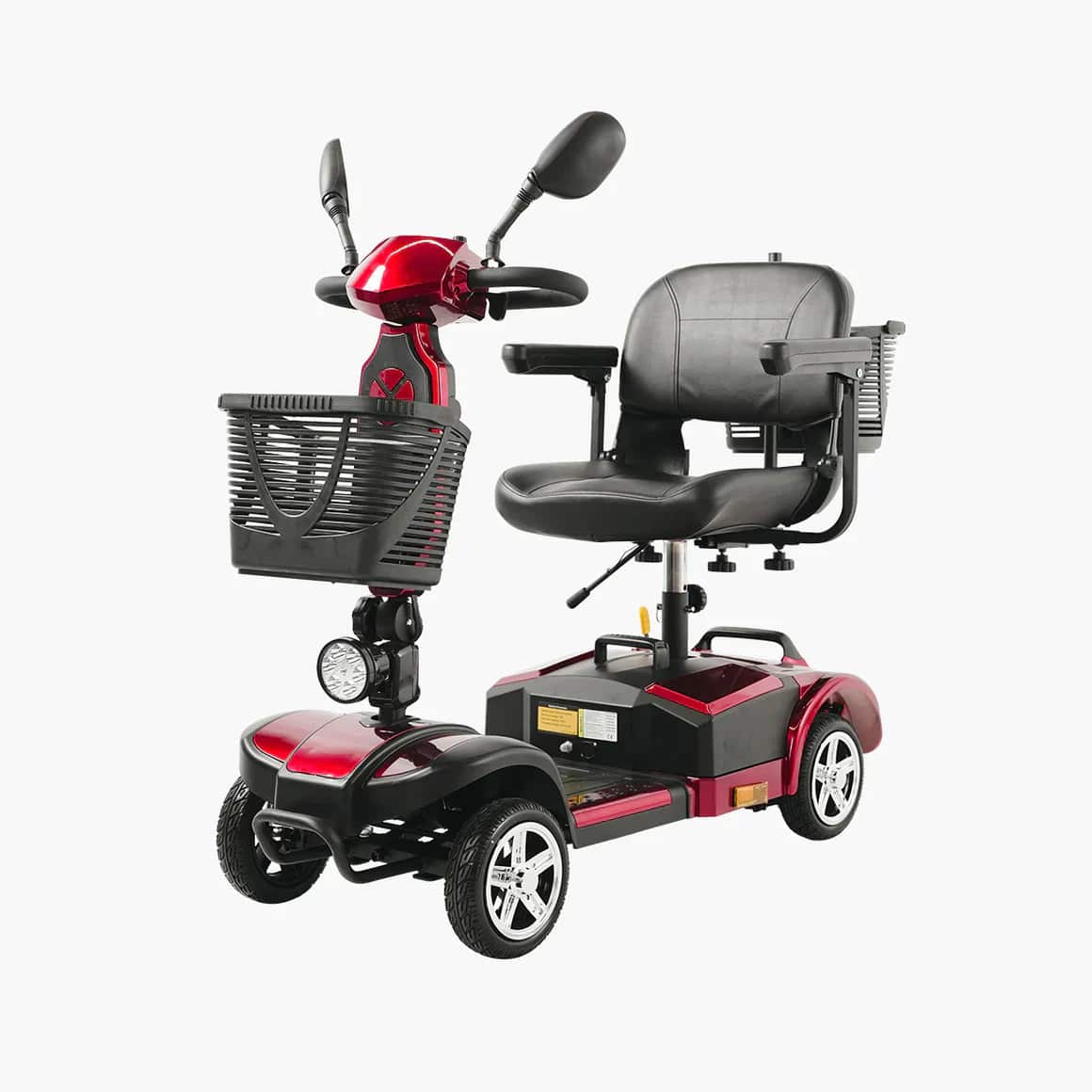










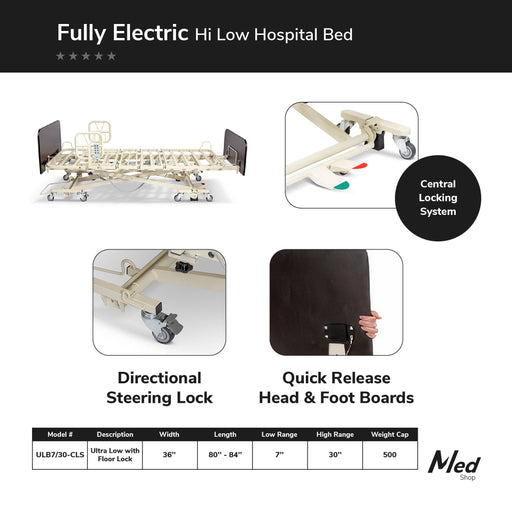
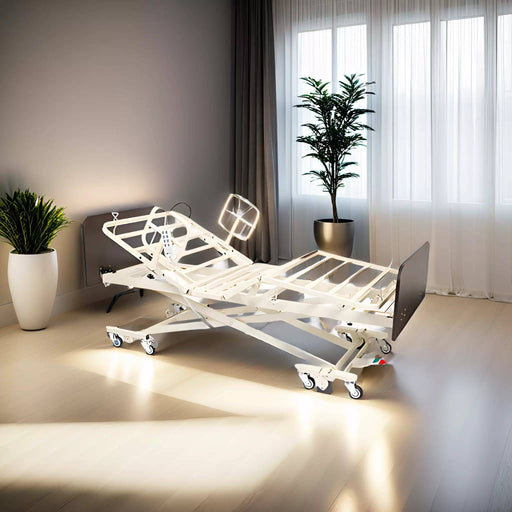


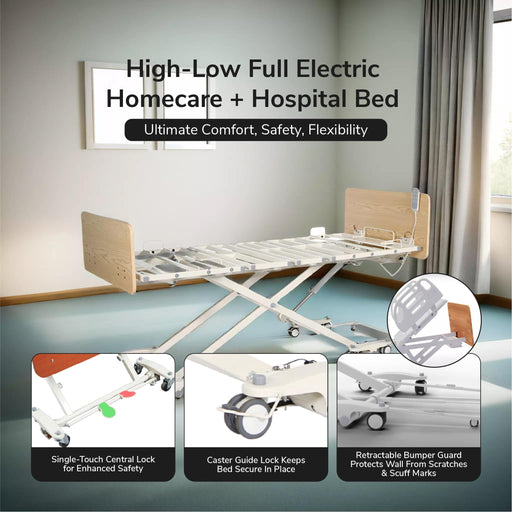
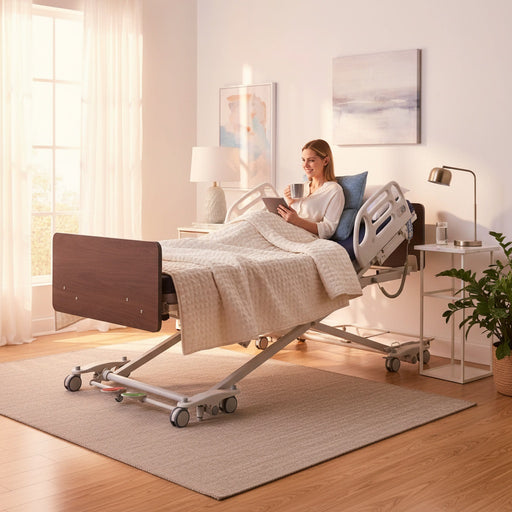
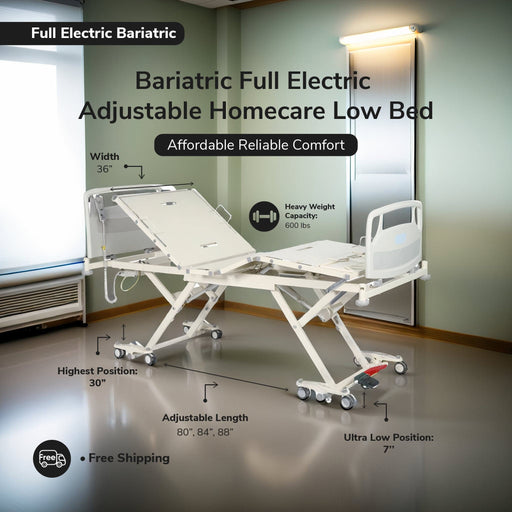
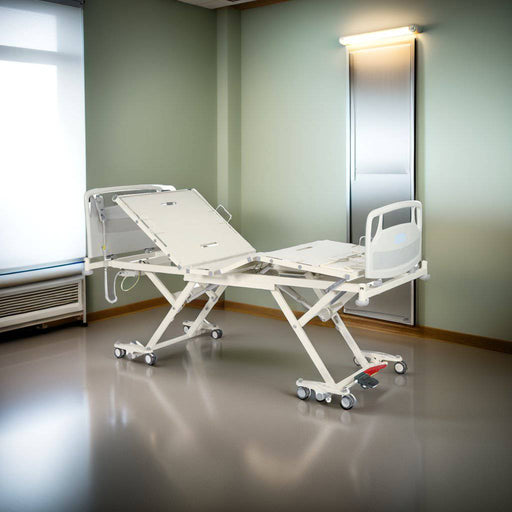
Leave a comment